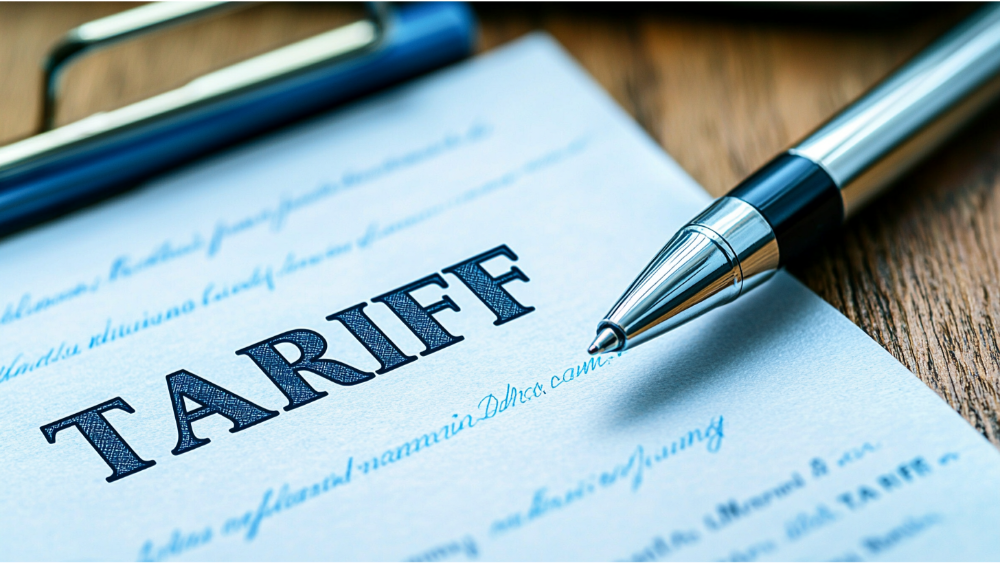Introduction
With each headline asking “will Trump actually do tariffs?”, it’s clear that questions around President Trump’s tariffs, import tariffs, and international trade policy remain front and center this year. As former President Donald Trump gears toward renewed economic oversight, it’s critical for high-net-worth individuals, retirees, business owners, and professionals facing major life transitions to understand the full scope and implications. From tariff revenue and trade deficit dynamics to sector-specific effects like steel and aluminum, auto tariffs, and Chinese imports, this guide illuminates the strategic decisions necessary to navigate these evolving policies.
At Towerpoint Wealth, our fiduciary advisory philosophy centers on clarity, compassion, and forward-thinking strategy, arming you for a world where trade policy, inflation, and economic security intersect.
What Tariffs Has the Trump Administration Already Imposed?

2025 Tariff Timeline & “Liberation Day”
On April 2, 2025, the day dubbed “Liberation Day”, President Trump signed executive actions under the International Emergency Economic Powers Act (IEEPA), declaring a national emergency to deploy a 10% blanket tariff on all imported goods. Shortly after, reciprocal tariffs ranging from 11–50% were announced against key trading partners based on their own tariff rate policies. These were not just threats: President Trump’s tariffs went into effect globally by early April.
- Steel and aluminum tariffs were expanded under Section 232 authorities, with duties rising from 25% to 50% effective June 4.
- Targeted auto tariffs quickly followed, with higher duties on vehicles and parts from countries like Canada, Mexico, the European Union, and South Korea, raising concerns of a global trade war.
The Trump Administration imposed these measures to address the U.S. trade deficit, promote domestic employment, and fund renewed tax cuts and infrastructure proposals through increased tariff revenue.
Country-Specific Actions and Retaliatory Tariffs
The global scope is significant:
- Canada, Mexico, and the European Union faced multi-tiered duties, including steel imports tariffs and additional levies on machinery, auto parts, and electronics.
- Chinese imports continue to be a central target. The U.S. slaps new tariffs on tech goods, medical devices, and rare earth minerals, citing unfair trade practices and national security.
- In response, foreign governments enacted retaliatory tariffs, targeting U.S. commodities such as agricultural products and consumer goods, escalating what many now see as a full-blown trade war.
Completing the picture, a Chinese delegation, led by Chinese President Xi Jinping, has engaged in diplomatic talks focused on reducing certain U.S. tariffs while pressing for improved market access.
How Is the Trump Administration Justifying These Tariffs?
Legal Foundations: IEEPA, Section 232, Section 301, and Beyond
The legal strategy involves multiple statutes:
- The first wave relied on international emergency economic powers under IEEPA.
- Section 232 of the Trade Expansion Act targeted imports like steel and aluminum under national security claims.
- Section 301 was invoked to address unfair practices abroad, particularly in Chinese imports.
- The administration has signaled openness to returning to Section 122 or even Section 338 if needed.
Treasury Secretary Scott Bessent and Commerce Secretary Howard Lutnick repeatedly emphasized that these tariff authorities enable the executive branch to impose tariffs without waiting for Congressional approval, though the legal hierarchy remains contested.
Legal Challenges Before the Court of International Trade
In late May, the Court of International Trade ruled that the use of IEEPA exceeded constitutional bounds and may require rollback. However, that ruling has been stayed pending appeal, so current duties remain active. If the judiciary strikes down IEEPA-based tariffs, the Trump Administration has indicated a swift pivot to other mechanisms, and to raise revenue and protect sovereignty in the global economy.
Economic & Investment Impacts of Trump’s Tariffs

Tariff Revenue vs. Economic Burden
From a fiscal perspective, higher tariffs are generating significant tax revenues: tariff revenue estimates now exceed $150 billion annually, nearly 0.5% of GDP. These funds help offset tax cuts and bolster federal or infrastructure budgets. However, this revenue boost masks deeper economic costs.
The Penn Wharton Budget Model projects a potential 6% hit to GDP and a 5% decline in wages under continued escalation. The average U.S. household could see revenue estimates factoring into $22,000 in lifetime income losses. The economic burden also manifests in more expensive cars, electronics, building supplies, and consumer goods, especially as auto tariffs, steel and aluminum tariffs, and duties on rare earth minerals feed through supply chains.
Inflation, Supply Chains & Consumers
Import tariffs directly increase costs for companies reliant on international inputs. As businesses pass on expenses, U.S. consumers feel the pinch. With inventories thinning in Q3–Q4, inflation could exceed 3–4% without further policy adjustments.
High-price sectors hit first: autos, electric vehicles, metals, industrial equipment, and technology. Even domestic manufacturers face rising costs for materials and capital equipment, reflecting in slower growth and tighter margins.
Markets, Capital Stock & Investment Flows
Global markets reacted quickly: defense and domestic industrial stocks gained modestly, while tech and consumer discretionary saw declines. Long-term investment into U.S. capital stock may accelerate, but only if policy remains consistent. Businesses are hesitant to invest domestically if import tariffs remain unpredictable.
The global economy is adapting: firms are reexamining supply chains, pursuing near-shoring, and increasing domestic reserves, though these shifts take time and incur upfront expense.
Will Trump Actually Do Tariffs, or Retreat?
Permanent, Temporary, or Conditional?
Right now, President Trump’s tariffs are in active effect, though subject to legal and political filtering. That includes:
- Blanket 10% duties on all imports
- Steel and aluminum tariffs at 50%
- Additional duties on Chinese goods and select imports
Whether these remain permanent features or are rolled back depends on three vectors:
- Court rulings ,particularly the IEEPA-based port, and related follow-ons.
- Trade negotiations, including potential trade deals with China, EU, or UK, in exchange for tariff reductions.
- Macro developments, like inflation, recession, or geopolitical disruptions.
Retaliation & Multilateral Trade Pressure
Countries like the European Union and South Korea have imposed retaliatory tariffs on U.S. exports. Combined with pressure from the World Trade Organization, those responses could reshape Trump’s tariffs over time. Success in a trade deal could reduce duties in exchange for reforms on market access, IP protection, or rare earth cooperation.
The Verdict: Tariff Policy Moving Forward
So, will Trump actually do tariffs beyond today? In short, yes, but with adaptation. The Trump Administration has made clear that if one legal path closes, another opens. Their aim is to reshape the trade deficit, incentivize domestic manufacturing, and generate tariff revenue, even amid litigation and global backlash.
Strategic Implications for Investors & Business Owners

For Investors: Portfolio Positioning & Risk Management
- Inflation-hedged assets: REITs, TIPS, commodities like metals and agriculture
- Domestic champions: Companies with strong supply chains entirely in the U.S.
- Sector rotation: Exit import-sensitive sectors (e.g., auto, tech hardware); explore defense, construction, agricultural plays
At Towerpoint Wealth, we reassess portfolios regularly, utilizing stress‑testing to prepare for diverse scenarios, including extended trade war progression or a softening after a trade deal.
For Businesses: Supply Chain, Cost and Strategy
Business owners face immediate issues:
- Tariff exposure — gauging which goods imported, from whom, and at what cost
- Pricing power — can costs be passed through, or absorbed?
- Reshoring vs. near-shoring — alternatives may cost more short-term but offer long-term stability
- Tax planning — tariff duties affect inventory cost basis, cash flow, and potential deduction strategies
We partner with client CPAs and attorneys to deliver coordinated solutions, adjusting financial models, optimizing cash flow, and reinforcing operational redundancies.
How Towerpoint Wealth Guides You Through Tariff Uncertainty
A Fiduciary Roadmap
Our mindset is rooted in fiduciary responsibility:
- We don’t predict policy; we plan for its range.
- Through disciplined, transparent steps, we help clients adapt without sacrificing strategy.
- Our advisory team stays abreast of developments, be it tariff policy, international trade rulings, trade deficit adjustments, or evolving global markets.
Ongoing Monitoring & Adaptive Planning
- Regular reviews: Quarterly strategy touchpoints to recalibrate assumptions
- Scenario modeling: From best-case (tariff rollback) to worst-case (prolonged trade war)
- Risk-mapping: Evaluating geopolitical threats, supply chain vulnerabilities, and inflation pressures
Our clients, like retirees, multigenerational families, and established entrepreneurs, receive tailored counsel that helps reduce surprise and build resilience.
FAQs – President Trump’s Tariffs & Trade Policy in 2025
Are President Trump’s tariffs legal?
The current batch relies primarily on IEEPA and Section 232. While the Court of International Trade has challenged IEEPA’s constitutionality, that decision is stayed on appeal. The Trump Administration has contingency plans to switch to Section 301 or Section 122 if IEEPA fails.
What is the level of the tariff rate?
We’re seeing a 10% global import tariff, plus steel and aluminum tariffs at 50%, and reciprocal tariffs up to 50% on autos, machinery, and technology from select trading partners.
Will tariffs hurt consumer prices?
Yes, tariffs would raise costs on goods imported, which will likely be passed to consumers. While inventories have cushioned prices for now, ongoing duties could drive inflation above 3–4%, particularly in autos, electronics, and industrial supplies.
What about tariff revenue and trade deficits?
Higher tariff revenue is expected to exceed $150 billion annually, funding federal programs or offsetting tax cuts. However, the trade deficit may persist as trading partners’ retaliation disrupts exports and global commerce.
Could foreign governments reduce tariffs?
Yes. Countries like the European Union, South Korea, and China are in talks aimed at reducing reciprocal tariffs, retaliatory tariffs, and barriers tied to market access. A trade deal could emerge if U.S.–China talks progress, possibly involving concessions on rare earths or IP protections.
Are auto tariffs next?
The administration has targeted autos and parts with steeper duties, framing them as an issue of unfair trade practices and national security. That opens up new front lines in manufacturing and global automotive strategy.
How should I adjust my investment or business plan?
Start with strategically shifting toward inflation-protected assets, defensible companies, and domestic supply chains. Business owners should analyze tariff exposure, pricing flexibility, and realignment opportunities. All should consult their trustee or advisor to adjust plans in real time.
Conclusion: Prepare, Don’t Predict
The question, will Trump actually do tariffs?, has moved from theoretical to tangible. President Trump has already taken bold steps using IEEPA, steel and aluminum tariffs, reciprocal tariffs, and action on Chinese imports. Whether this ends in a trade deal, full trade war, or tactical pause depends on unfolding court decisions, international negotiations, and economic pressures.
Tariffs shape our national debate on trade deficit, economic sovereignty, consumer costs, and international trade norms. For investors and business owners, this creates both challenge and potential. With rigorous planning, flexible positioning, and ongoing guidance, you can stay ahead, not behind.
At Towerpoint Wealth, we offer that guidance, integrating tariff assessments into every layer of financial planning, investment strategy, and business consultation. Let’s continue the conversation and chart your course through uncertainty with clarity, confidence, and care.




